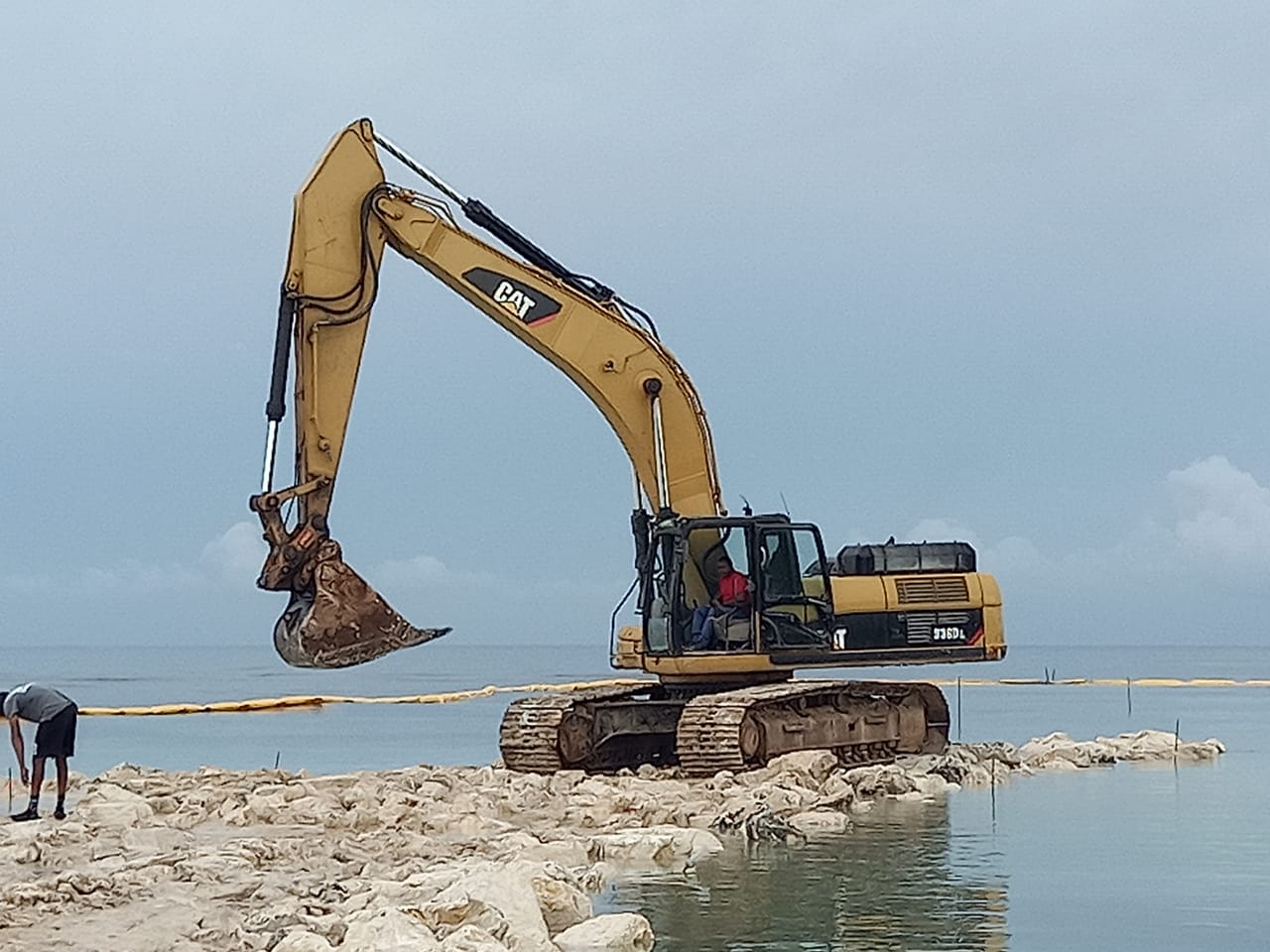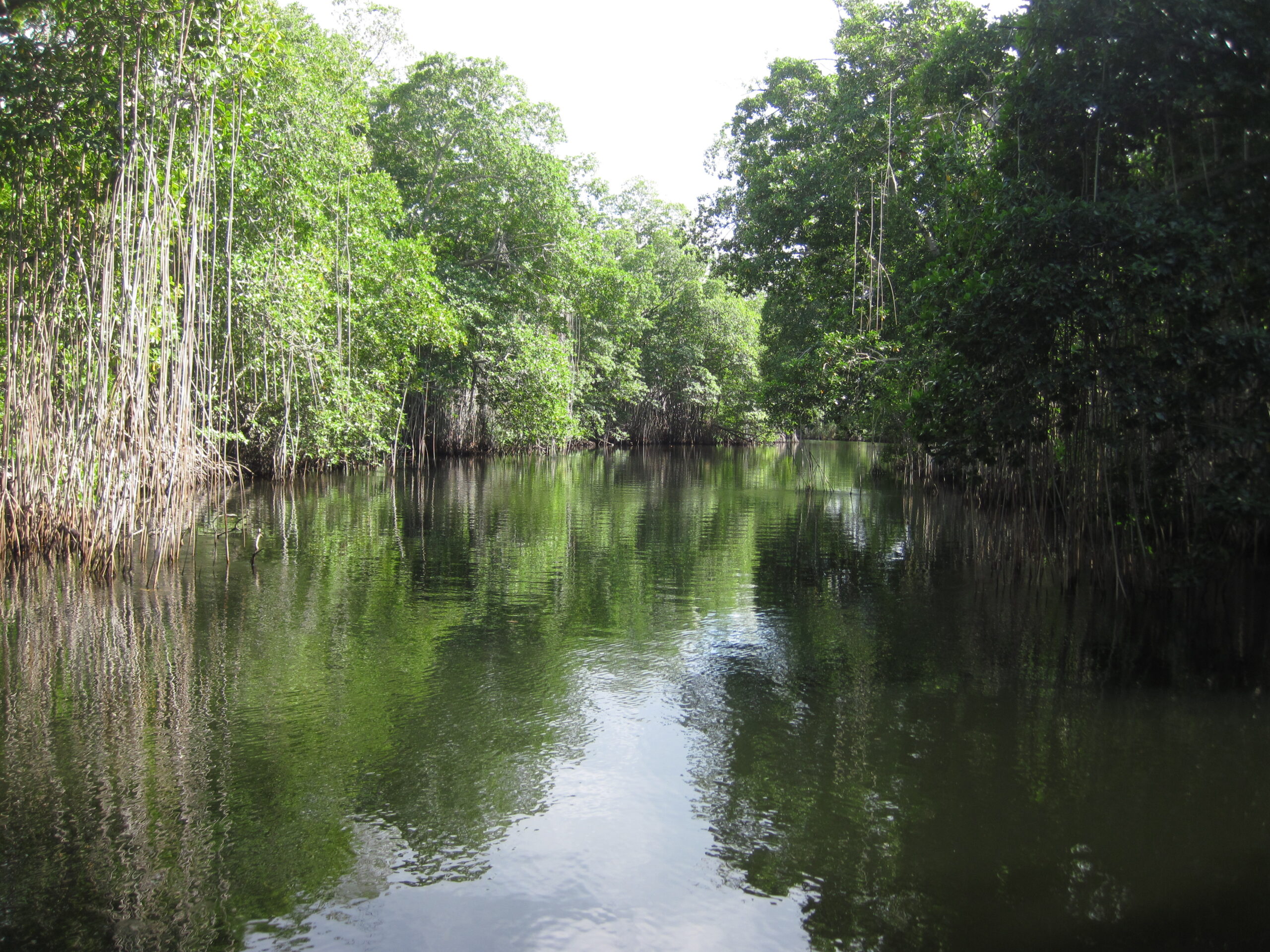The coastal town of Savanna-la-Mar, which once fended off pirates of the Caribbean, now struggles to stave off a new and different enemy: climate change. The former port to the sugar and slave trade, located near Jamaica’s southwest tip, suffers polluted water, severe coastal flooding from storms, and overfished waters. Smith Warner International has been exploring how to use ecosystem-based adaptation measures to help restore the town’s mangroves and marine habitat while engaging community members and creating sustainable coastal protection.
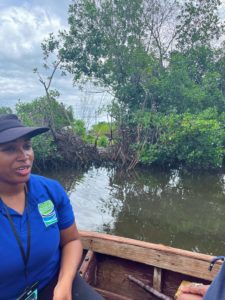 Sav, as many Jamaicans call it, “has a wealth of mangroves which should offer good protection against storm surges and wave action,” explains Renee McDonald-Lyn Shue, an Environmental Specialist and Geologist with Smith Warner. “But pollution both from the sea and from the rivers has degraded them badly.” Informal settlements have developed near the water’s edge, further destroying the mangrove forests which, in turn, has harmed the habitats of potentially hundreds of marine species.
Sav, as many Jamaicans call it, “has a wealth of mangroves which should offer good protection against storm surges and wave action,” explains Renee McDonald-Lyn Shue, an Environmental Specialist and Geologist with Smith Warner. “But pollution both from the sea and from the rivers has degraded them badly.” Informal settlements have developed near the water’s edge, further destroying the mangrove forests which, in turn, has harmed the habitats of potentially hundreds of marine species.
Ecosystem-based adaptation (EbA) is more than just nature-based solutions. It “links biodiversity and ecosystem conservation approaches with sustainable socio-economic development as part of an overall strategy for helping people adapt to shocks and risks associated with climate change,” according to a framework developed by the group Friends of Ecosystem-based Adaptation. For solutions to be sustainable, the community stakeholders must be involved in the planning, development, and implementation of any such project.
In 2019, Smith Warner International began an assessment for the Jamaica Social Investment Fund (JSIF) under the Jamaica Disaster Vulnerability Reduction Project. The firm gathered extensive data from eight coastal towns on the island to gauge the risks on each from climate change and to explore potential protection measures. Of the eight towns, Savanna-la-Mar was exposed to the most severe potential flooding, which could extend the furthest inland. These findings prompted the firm to continue studying how to protect Sav’s residents and natural resources from the accelerating effects of climate change.
Smith Warner Managing Director and Senior Coastal Engineer Jamel Banton remembers, “We can conceptualise what we can do – what kind of protection we would want, how this would work from an ecological standpoint and at what stage would we want the community involved with the project.” The firm had already modelled coastal processes for the JSIF analysis and began to determine the stakeholders.
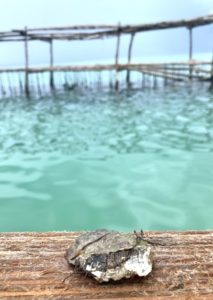 Also in 2019, Jamaica’s National Fisheries Authority (NFA) had begun working with the Westmoreland Municipal Corporation to develop an aquaculture program in Savanna-la-Mar (and in nearby Green Island in Hanover parish) to help the local fisherfolk learn to cultivate oysters. The NFA provided the Western Oyster Supreme Group in Sav with oyster larvae cultivated at the mouth of the estuary in Bowden Bay, several hours’ drive away, so that the oyster farmers could allow the larvae to attach to a surface, in this case made of rubber tires, located in brackish water in the sea. While production is limited, it has been successful.
Also in 2019, Jamaica’s National Fisheries Authority (NFA) had begun working with the Westmoreland Municipal Corporation to develop an aquaculture program in Savanna-la-Mar (and in nearby Green Island in Hanover parish) to help the local fisherfolk learn to cultivate oysters. The NFA provided the Western Oyster Supreme Group in Sav with oyster larvae cultivated at the mouth of the estuary in Bowden Bay, several hours’ drive away, so that the oyster farmers could allow the larvae to attach to a surface, in this case made of rubber tires, located in brackish water in the sea. While production is limited, it has been successful.
Since oysters naturally filter water, removing excess nutrients and toxins, the idea of using them to help filter the polluted water off the coast of Savanna-la-Mar made sense. Four species of oysters are native to Jamaica, and at least two of those adhere to mangrove roots. Mangrove roots collect sediments, which further strengthens their base, and the addition of oysters makes that source of coastal protection even stronger. Smith Warner hopes to build mangrove barrier islands off the coast of Savanna-la-Mar as well as encouraging oysters to grow in reef form on an armour stone substrate.
For a project to be a true ecosystem-based adaptation measure, it must meet many criteria. At a local, regional, and/or national level, government would have to set policies and work to incorporate “…targets of sustainable development, agriculture, land use, poverty reduction, natural resource management, climate change adaptation, and disaster risk reduction… The ability to adapt to climate change hinges on the ability of local people (comprising different groups, genders, customary bodies, etc.) to take on their rights and responsibilities and to be represented by officials who are accountable to them,” according to the Friends of Ecosystem-based Adaptation framework.
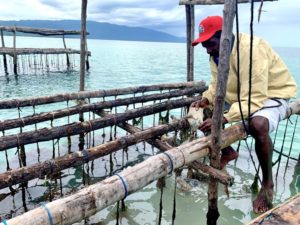 In Savanna-la-Mar, the oyster cultivation and the mangrove reforestation efforts could provide important job training, sustainable community involvement, improved food security, and reduced poverty all while reducing the risk of severe and damaging flooding. It’s a major effort and getting there will require planning, perseverance, and participation.
In Savanna-la-Mar, the oyster cultivation and the mangrove reforestation efforts could provide important job training, sustainable community involvement, improved food security, and reduced poverty all while reducing the risk of severe and damaging flooding. It’s a major effort and getting there will require planning, perseverance, and participation.
